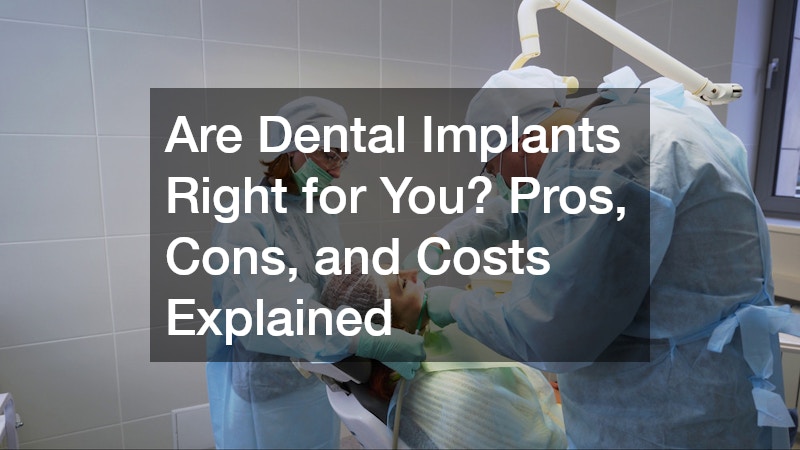
In this article, we will explore the viability of dental implants as a solution for missing or damaged teeth. You will learn about the advantages and disadvantages, compare costs, and better understand whether dental implants are the right choice for you. Dental implants have become increasingly popular, offering a permanent solution to restoring smiles and functionality.
Improved Oral Health
Dental implants play a crucial role in improving oral health by preventing bone loss and promoting gum health. Unlike bridges, which can impact surrounding teeth, implants are standalone solutions that do not compromise adjacent teeth. By acting as a natural tooth root, implants help maintain the jawbone’s integrity and overall oral structure.
Regular brushing, flossing, and dental check-ups further enhance the benefits of implants. With implants, individuals often find it easier to maintain their oral hygiene routine compared to removable dentures. This commitment to oral hygiene helps reduce plaque build-up and lowers the risk of gum disease.
Enhanced Aesthetics and Confidence
A significant benefit of dental implants is the improved aesthetics they offer, leading to increased confidence. Implants are custom-designed to match the size, shape, and color of your natural teeth. This attention to detail results in a seamless integration that enhances your smile’s appearance.
People often report a renewed sense of self-esteem after receiving implants, as their smiles appear more natural and appealing. This boost in confidence can positively impact various aspects of life, including personal and professional relationships. The secure nature of implants also eliminates the worry of slipping or moving, as seen with dentures.
Long-Term Durability and Functionality
Dental implants are known for their exceptional durability and ability to function like natural teeth. With proper care, implants can last a lifetime, making them a cost-effective solution over time. This longevity comes from the robust materials used, such as titanium, which securely anchors the implant.
In terms of functionality, implants mimic the natural biting and chewing process. This efficiency allows individuals to enjoy a wide variety of foods without hesitation. By providing stability, implants ensure that daily activities such as speaking and eating feel comfortable and natural.
Surgical Risks and Complications
While dental implants have a high success rate, there are potential surgical risks and complications. These may include infection, nerve damage, and sinus problems, which require careful monitoring by dental professionals. Despite these risks, advancements in dental technology have reduced the incidence of complications.
It is important to discuss any medical conditions with your dentist prior to surgery, as certain factors may increase the risk of complications. For instance, patients with diabetes or compromised immune systems may need additional precautions. Proper planning and a comprehensive health assessment can mitigate these risks.
Suitability and Success Rates
Dental implants are not suitable for everyone; various factors determine a patient’s eligibility. Ideal candidates typically have adequate jawbone density and good oral hygiene habits. Additionally, patients must be healthy enough to undergo a surgical procedure and heal properly afterwards.
Success rates for dental implants are high, with reports averaging around 95%. However, factors such as smoking, diabetes, and poor oral care can decrease this success rate. A thorough assessment helps identify these risks and implement strategies to improve outcomes.
Cost Breakdown and Factors Affecting Price
The cost of dental implants can vary significantly based on several factors. These include the geographic location of the dental practice, the dentist’s experience, and the specific requirements of your dental situation. In general, a single implant can range from $1,500 to $6,000, including the crown and abutment.
Additional costs may arise from preparatory procedures, such as bone grafting or extractions before implant placement. Moreover, the type of implant and material used can also influence the overall price. Due to these factors, obtaining a detailed quote and understanding each component of the cost is essential.
Insurance and Financing Options
Many people wonder about insurance coverage when considering dental implants. Coverage for implants varies significantly depending on the insurance policy, and many plans consider implants as elective procedures. It is advisable to review your policy thoroughly and discuss coverage options with your insurance provider.
For those whose insurance might not cover implants, alternative financing options are available. Many dental offices offer payment plans or work with third-party companies to provide financing at low interest rates. These financing arrangements can spread the cost of implants over a manageable period.
Comparing Costs with Other Dental Solutions
When considering dental implants, it is important to compare the costs with alternative dental solutions. Other options, such as bridges or dentures, often present a lower initial expense but may require more frequent replacements. Ill-fitting dentures or bridges can lead to further oral health issues, adding additional costs in the long run.
For example, dental bridges may require replacement every 5 to 10 years, whereas implants can last a lifetime with proper care. Over time, the cumulative costs and maintenance associated with bridges or dentures can surpass those of implants. Furthermore, the superior functionality and comfort of implants provide an unmatched quality of life improvement.
In conclusion, dental implants offer numerous benefits, including improved oral health, enhanced aesthetics, and long-term durability. They are not without risks, and careful consideration is needed to determine suitability and financial viability. By weighing the pros and cons and consulting with dental professionals, individuals can make informed decisions about whether dental implants are the right choice for their needs.
.



